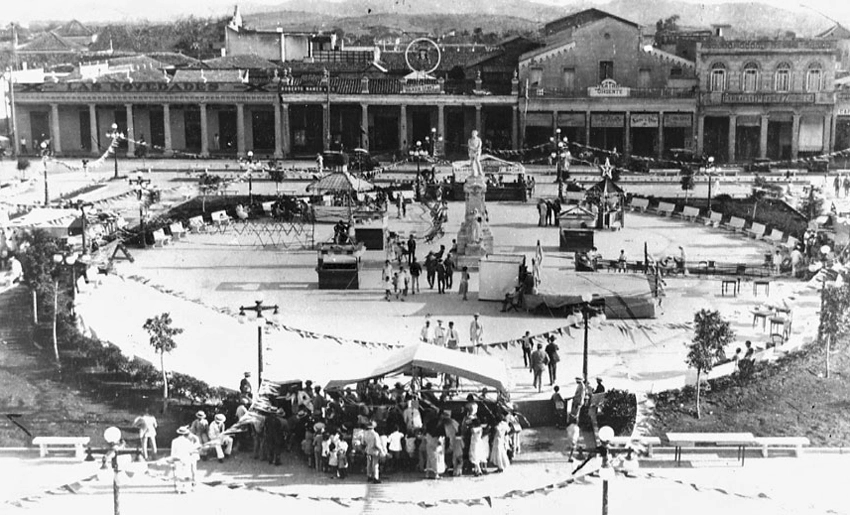An old dream of Holguin people
The origin of Holguin has very humble roots. There is no exact date of the construction of the town. According to historian José Novoa Betancourt, between 1717 and 1719, the town was moved and built, while in 1720 it was made official.
Progress in its development was slow. In 1726 the settlement had a church and 70 guano roof houses that could accommodate about 300 people. (1) The governor of the Eastern Department approved, in that year, that the position of lieutenant of justice and captain of war be instituted.
The population grew gradually. They had claimed to separate from Bayamo, to which they belonged to when the colony was organized. In 1752 the municipality was constituted and granted the title of City.
Holguin people, from very early times, had pretensions of becoming a province. The geographical conditions were favorable to them, because the town is located in the north of Eastern Cuba. According to historians Mayra San Miguel and Hernel Perez Concepcion,
“…the development reached by the Municipal District of Holguín with its head city and the socioeconomic, natural and historical coherence achieved in the northern Oriente region between the 18th and 20th centuries, created a difference with the southeast that led to the need for independence to manage its own affairs”. (2)
Queen Isabel II of Spain, who, in 1865 thought of structuring the general captaincy of Cuba in several provinces. One of them would have Holguín as capital. This was a way to maintain a greater dominion over her rich colony. The queen must have thought that the eastern department was too extensive for a governor, from Santiago de Cuba, to maintain optimal control and vigilance in the region. But the project did not go beyond ideas.
When Cuba was occupied by the United States the governor of Oriente, Leonardo Wood, created, by a military decree, on October 26, 1898, the federal district of Holguín integrated by the municipalities: Mayarí, Gibara, Puerto Padre, Victoria de las Tunas and Holguín. The head was the city of Holguin. But the municipality of Holguin lost part of its territory. This project did not prosper either.
On January 25, 1899 it was proposed, by the council of mayors of the federal district, established by the interveners, to create a province that would have as capital the city of Holguin:
“…with all the territory comprised between this Northern Coast and Sagua river and Cauto river, and that of course appoint the governor that should govern it with the same faculties as the Governors of the other provinces and with the necessary special authorization to proceed to the establishment of all the provincial organisms and the reconstruction of this territory with the product of our Customs”. (3) What was not approved and Holguin continued being a municipality of Oriente, that had Santiago de Cuba as provincial capital.
If in the XVIII century, Holguín had detached from Bayamo and constituted its municipality, in the XX century it would try to separate from Santiago de Cuba to form a new province.
The creation of the Republic, in 1902, and the unusual development that reached the north of Oriente, by the expansion in the zone of the sugar industry in the first decades of the XX century, woke up again the enthusiasm of Holguin people to separate from Santiago de Cuba and to form a province. But, it would have competitors in the area. In 1901, in the Constituent Assembly, José Antonio Fernández de Castro proposed the creation of the province of Cauto, which would have Bayamo as its capital. The request was not accepted.
Antonio Masferrer y Grave de Peralta, elected by Holguin representative to the chamber, in 1901 proposed in 1903 the division of Oriente in two provinces: the South and the North. The latter would have Holguín as its capital. It was not accepted. (4)
Rafael Masferrer Landa became from the decade of the thirties of the XX century in standard bearer of the formation of a province that had as capital our city. He wrote in the publication El Mambí, on August 2, 1941 “…the municipalities of the Northern Oriente are the most forgotten… their anxieties have just been disappointed because an audience was created in that area, located so far away from Santiago de Cuba”. (5) Holguin people promoted and achieved the creation of the aforementioned audience that was located in their city.
In the forties and fifties, with a certain economic boom and urbanization of the city, the criterion was strengthened and the propaganda to achieve the longed province continued. The efforts failed. It would not be until 1976 that Holguin became a province by the new political-administrative division.
An old dream of Holguin people
Notes
An old dream of Holguin people
1-José Novoa Betancourt, Contribution to the Colonial History of Holguín, 1752- 1823, Ediciones Holguín, 2001.
2-Mayra San Miguel and Hernel Pérez Concepción, Urbanization and Modernity. The public policies in the City of Holguin. Ediciones Holguín, 2010, p. 24.
3- Idem p. 25
4-Idem pp. 26 -27.
5-p. 27
An old dream of Holguin people
- Néstor Salazar, from the microphone to the kitchen - 7 de October de 2024
- Did Henri Cartier-Bresson visit the city of Holguin? - 16 de September de 2024
- Zenovio and his trails of Cuban musical culture - 2 de September de 2024

